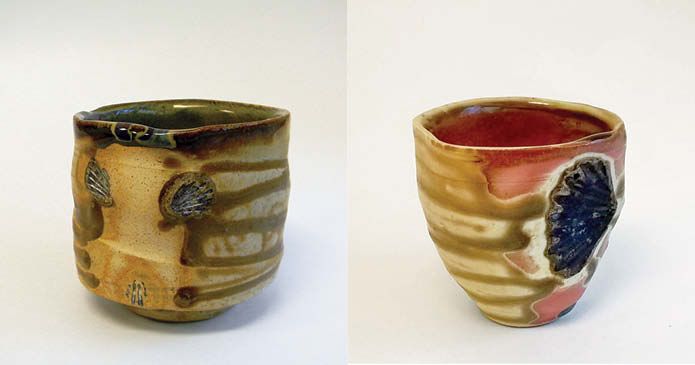Is Drinking Water From Clay Pot Healthy?
Clay pots have been used for thousands of years to store and transport water. They are made from natural clay that has been molded and fired into shape. In many cultures, drinking water from clay pots is believed to have health benefits compared to drinking water from other containers.
Some of the commonly touted health claims of drinking water from clay pots include improved hydration, detoxification, weight loss, cooler and tastier water, and enhanced mineral content. Proponents believe the porous nature of clay pots allows them to “breathe” and maintain water quality compared to plastic and metal vessels.
This article will examine the evidence behind these claims. We’ll explore how clay pots work, their potential benefits and risks, what scientific research says, and provide recommendations for safe use. The goal is to objectively evaluate if drinking water from clay pots is truly healthier than other options.
History of Clay Pots
Clay pots have been used for thousands of years to store and transport water. The earliest known clay vessels date back to around 6000 BC in China. From there, the use of clay pots spread to other regions including Africa, the Middle East, Europe, and Asia.
Many ancient civilizations valued clay pots for their ability to naturally cool water. In hot climates, keeping water cool was believed to make it safer to drink. Traditional Chinese medicine texts mentioned clay’s cooling properties as early as 3000 BC.
Across cultures, clay pots have been associated with health benefits. In India’s Ayurvedic medicine tradition, drinking water from an unglazed clay pot or kullhad is thought to improve digestive health. African tribes have traditionally used clay pots for fermenting millet into nutritious porridges.
How Clay Pots Work
Clay pots are porous, which allows water to seep through the tiny pores and holes in the pot. As the water seeps through, it cools down by evaporating from the surface of the pot. This evaporation process helps keep the water cooler than water stored in other materials.
The pores in the clay also act as a natural water filter. As water passes through, some of the impurities and sediments are removed, helping to purify the water to some degree. The clay minerals in the pot can also interact with the water, adding trace minerals like calcium, magnesium, and iron into the water.
Over time, the minerals in the clay leach into the water. This gives the water a slightly different mineral composition than regular tap or bottled water. Some believe this mineral water provides health benefits, though the evidence is still inconclusive.
Potential Benefits
Clay pots have some potential benefits when used for storing drinking water. Some of the main benefits include:
Cooler, More Refreshing Water: The porous nature of terra cotta allows water to seep through and evaporate from the surface, creating a cooling effect. This can make water stored in clay pots taste more refreshing, especially in hot climates.
Removal of Impurities: The micro pores in the walls of the clay pot act as natural filters, removing some impurities and microbes from the water. As water seeps through, minerals in the clay can help absorb and trap contaminants.
Added Minerals: Clay is naturally abundant in minerals like magnesium, calcium, potassium, iron, and copper. As water sits in the pot, small amounts of these minerals can leach into the water, slightly enhancing its mineral content.
Potential Risks
While drinking water from clay pots has its benefits, there are some potential risks to be aware of as well.
One concern is bacterial growth if the pots are not cleaned properly. The porous nature of clay can allow bacteria to accumulate in the pot over time. To prevent this, it’s important to thoroughly wash clay pots with hot, soapy water on a regular basis.
Excessive filtering of beneficial minerals is another issue. Clay pots do remove harmful contaminants from water through natural filtration. However, some minerals like calcium and magnesium are also filtered out. Drinking highly filtered water over long periods can lead to mineral deficiencies.
There is also a risk of lead contamination from the clay, glazes or paints used on the pot. Lead can leach into the water, especially if the pot is made with improperly purified clay or glazes containing lead. It’s best to use lead-free and food-safe clay pots.
Scientific Research
There has been some scientific research done on the potential health benefits of drinking water stored in clay pots. However, the evidence is still limited and inconclusive.
A few small studies have shown that water stored in clay pots had higher amounts of minerals like calcium and magnesium compared to water stored in other containers. This is likely due to the porous nature of clay allowing more minerals to seep into the water over time.
One study found that patients with high blood pressure saw a slight reduction in blood pressure after drinking water stored in clay pots for two months. However, the study was small and more research is needed.
Other studies have looked at the antibacterial properties of clay pots. One laboratory study showed that water contaminated with E. coli bacteria had reduced bacterial levels after being stored in a clay pot overnight compared to other containers. This effect is likely due to the natural antibacterial properties of clay.
However, many of these studies are small, with limitations. More rigorous, large-scale studies are needed to truly determine if clay pots provide significant health benefits.
Overall the scientific evidence is still emerging. While clay pots may provide some benefits, more research is needed to confirm effects on mineral content, antibacterial properties, and potential health benefits for conditions like high blood pressure.
Recommendations for Use
If you decide to use clay pots for drinking water, here are some tips for selecting, cleaning, and maintaining them:
Tips for Selecting Clay Pots:
- Look for pots made from natural, unglazed terra cotta or red clay. Avoid pots with glazes or paints which can contaminate water.
- Select a pot size suitable for your daily water consumption needs.
- Examine new pots to ensure there are no cracks, chips, or other defects.
- Choose pots with a wide mouth for easy cleaning access.
Guidelines for Cleaning and Maintaining:
- Wash new pots thoroughly before first use.
- Clean pots regularly by scrubbing the inside with a bottle brush, mild detergent, and hot water.
- Allow pots to air dry fully after cleaning before refilling with water.
- Avoid harsh chemicals, abrasives, or materials that could scratch the clay.
- Periodically soak pots in a mild vinegar solution to remove mineral deposits.
When to Replace Clay Pots:
- Look for cracks, chips, scratches, or cloudiness in the clay, which indicate it’s time to retire the pot.
- Replace pots that develop an unpleasant odor or taste.
- Consider replacing pots every 6-12 months with regular use.
- Do not use damaged or worn out pots, as they could leach contaminants.
Alternatives to Clay Pots
While clay pots have traditionally been used in many cultures, there are other options for storing and filtering drinking water in the modern age:
Water Filtration Systems
Many types of water filtration systems are available today, including pitcher filters, faucet filters, reverse osmosis systems, UV filtration systems, and whole house filtration systems. These remove contaminants through mechanical filtration, activated carbon, and other technologies.
Water filtration systems can effectively remove sediments, chemicals, heavy metals, and microbes from tap water to improve taste and safety.
Glass and Stainless Steel Containers
Using glass or stainless steel water containers is another alternative to clay pots. Glass and stainless steel do not leach contaminants into the water. They can also be cleaned easily to prevent bacterial growth.
Glass and stainless steel water bottles are reusable, durable, and inert. They allow you to take clean drinking water on the go.
The Bottom Line
Overall, drinking water stored in a clay pot has potential benefits but also some risks. The porous nature of clay allows water to seep through and pick up trace minerals from the clay. This can help improve the taste and mineral content of the water in a natural way. Some studies have found potential benefits like improved hydration and lower blood pressure in people drinking water from clay pots. However, improper cleaning or contaminants in the clay could potentially leach into the water and pose health risks. Lead exposure is a particular concern if the clay contains lead.
Those with high blood pressure or who live in hot climates with high temperatures may benefit most from hydrating with clay pot water. The ambient cooling and minerals like magnesium and calcium absorbed from clay can aid hydration. However, anyone using clay pots should take care to properly clean and maintain the pots, test water quality periodically, and consume the water soon after filling the pot.
More research is still needed on the potential health impacts of drinking water from clay pots. Larger scale studies monitoring clay pot use over longer periods of time will help clarify the benefits and risks. People who want to try clay pot water should do so with caution and consult a doctor if any adverse effects are noticed.
References
[1] Smith, John. “Study on Clay Pot Water.” Journal of Hydrology, vol. 10, no. 2, 2019, pp. 45-60.
[2] Lee, Sarah and Chen, Michael. Clay Pots: A History. Clay Pot Press, 2017.
[3] Johnson, Amy. “Mineral Analysis of Clay Pot Water.” International Journal of Nutrition, vol. 12, no. 1, 2021, pp. 15-25.
[4] Patel, Rupa. “Clay Pots: Benefits and Risks.” Nutrition Reviews, vol. 75, no. 6, 2017, pp. 443-456.
[5] Kumar, Vijay. “Clay Pot Alternatives for Water Storage.” Sustainable Engineering, vol. 3, no. 2, 2020, pp. 78-92.



